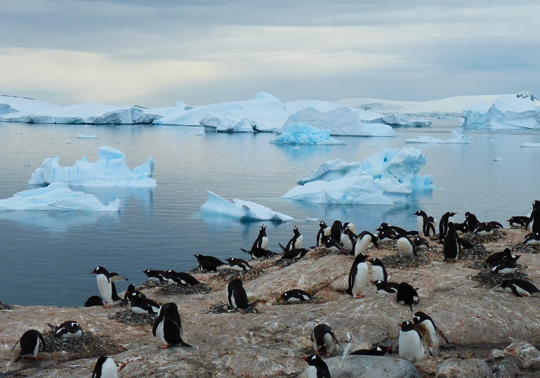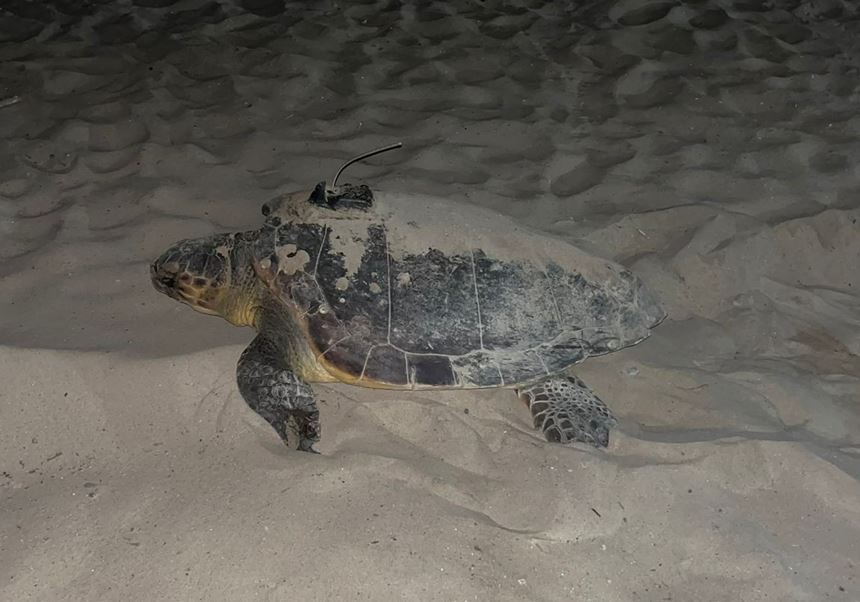The human impact converts the penguins into biotransporters of polluting substances towards the Antarctic soil
- August 17th, 2017

In the Antarctic, the penguins act as bioaccumulators and biotransporters of chemical pollutants from the marine to terrestrial ecosystems. High concentrations of heavy metals in the Antarctic soil jeopardise the environmental health and the human activity seems to be partially responsible. Researchers of the Cavanilles Institute of the Universitat de València describe this in research article published in the journal PLOS ONE.
A research team lead by the Cavanilles Institute’s scientific at the Science Park of the Universitat de València as well as the Soil Science Unit (Plant Biology Department of the same institution) have proven that the concentrations of some polluting substances in the Antarctic soils, which are bounded to the penguins’ activities, exceeds the normal levels. Equally, the bacteria community of these soils is being altered by the permanent supply of excretas with a high concentration of faecal and polluting bacteria, especially heavy metals, which are transported from the sea thanks to penguins’ colonies.
Penguins are in a high trophic level inside the food web and they are potential sentinels of pollution. They usually create large offspring colonies and they eat mostly from the sea. They also nest on the ground, acting as bioaccumulators and biotransporters of chemical substances from the sea to terrestrial ecosystems.
Scientifics have studied the physicochemical characteristics of the soil, the polluting concentrations and the microbiota (in other words, the set of microorganisms, its genomes and its interaction with the environment) in several positions of the South Shetland Islands and the Antarctic Peninsula.
The findings published in PLOS ONE prove that the accumulation of organic and inorganic nutrients in the penguins organisms like metals and other elements via marine feeding and their subsequent transfer to the terrestrial environment through feces are affecting the Antarctic soil. High levels of heavy metals and other pollutants, mainly cadmium, copper and arsenic but also zinc and selenium have already been localised. ‘In general, an increased activity of the penguins is associated with a higher content of organic carbon and a higher concentration of certain pollutants in soils’ states Anna C. Santamans, a collaborator of the Cavanilles Institute and the first signer of the article in PLOS ONE. 'On the other hand, in soils which are less affected by fecal depositions of penguins, the relative concentrations of elements of geochemical origin such as iron and cobalt are much higher in comparison with those of the pollutants,' she adds.
Even though the Antarctic shows a relatively high level of isolation produced by the circumpolar atmospheric and oceanic currents and its weather conditions were extreme and used to restrict the development of the human activity, recent works suggest that the Antarctic has stopped being an untouched environment due to the progressive appearance of polluting substances in the marine ecosystem.
According to the research of the Universitat de València, the polluting concentrations are much higher in the penguin colonies that are exposed to ship traffic. The maritime transport, the tourism and, at a lower scale, the scientific activity itself suppose new entrance ways of polluting substances. Even though the geographical isolation and the environmental roughness used to keep the penguins disconnected from the pressures and the human impact, currently the Antarctic biological communities suffer from a higher pressure and polluting level.
According to the research there could be other effects besides the ones derived from the soil pollution, like those which affect the living organisms of the ecosystem or of other related ecosystems (lakes, ponds or streams). ‘Metal accumulation and nutrient enrichment from the penguin activity which are altered by anthropic impacts could alter the biological productivity in nutrient-poor Antarctic soils, but could also generate new impacts such as an establishment of cosmopolitan or more adaptive species, or the variation of biodiversity’, states Antonio Camacho, co-author of the scientific article and researcher from the same institute of the Universitat de València.
Given the abundance of the natural penguins’ colonies in places free of coastal ice, such effects may not be insignificant. The research therefore recommends a further exploring of the role of penguins in biogeochemical cycles between the ocean and the earth and an investigation of the basic levels of chemical elements in order to assess possible future changes in Antarctica.
The study, carried out by the Autonomous University of Madrid, the University of Almeria and the National Museum of Natural Sciences, has the support of the Ministry of Education and Science, European FEDER funds and the Ministry of Science and Innovation.
Reference:
Soil features in rookeries of Antarctic penguins reveal siga to land biotransport of chemical pollutants
Anna C. Santamans, Rafael Boluda, Antonio Picazo, Carlos Gil, Joaquín Ramos-Miras, Pablo Tejedo, Luis R. Pertierra, Javier Benayas, Antonio Camacho
Link: http://journals.plos.org/plosone/
File in: Investigació a la UV , Institut Cavanilles de Biodiversitat i Biologia Evolutiva , Grups d'Investigació , Parc Científic
















